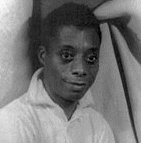
Teju Cole, Black body : rereading James Baldwin's Stranger in the village
Article paru dans "The New Yorker", 19 août 2014.
"Stranger in the Village first appeared in Harper’s Magazine in 1953, and then in the essay collection “Notes of a Native Son,” in 1955. It recounts the experience of being black in an all-white village. It begins with a sense of an extreme journey, like Charles Darwin’s in the Galápagos or Tété-Michel Kpomassie’s in Greenland. But then it opens out into other concerns and into a different voice, swivelling to look at the American racial situation in the nineteen-fifties. The part of the essay that focusses on the Swiss village is both bemused and sorrowful. Baldwin is alert to the absurdity of being a writer from New York who is considered in some way inferior by Swiss villagers, many of whom have never travelled. But, later in the essay, when he writes about race in America, he is not at all bemused. He is angry and prophetic, writing with a hard clarity and carried along by a precipitous eloquence. (...)
In her brilliant “Harlem Is Nowhere,” Sharifa Rhodes-Pitts writes, “In almost every essay James Baldwin wrote about Harlem, there is a moment when he commits a literary sleight-of-hand so particular that, if he’d been an athlete, sportscasters would have codified the maneuver and named it ‘the Jimmy.’ I think of it in cinematic terms, because its effect reminds me of a technique wherein camera operators pan out by starting with a tight shot and then zoom out to a wide view while the lens remains focused on a point in the distance.” This move, this sudden widening of focus, is present even in his essays that are not about Harlem. In “Stranger in the Village,” there’s a passage about seven pages in where one can feel the rhetoric revving up, as Baldwin prepares to leave behind the calm, fabular atmosphere of the opening section. (...)
If Leukerbad was his mountain pulpit, the United States was his audience. The remote village gave him a sharper view of what things looked like back home. He was a stranger in Leukerbad, Baldwin wrote, but there was no possibility for blacks to be strangers in the United States, nor for whites to achieve the fantasy of an all-white America purged of blacks. This fantasy about the disposability of black life is a constant in American history. It takes a while to understand that this disposability continues. It takes whites a while to understand it; it takes non-black people of color a while to understand it; and it takes some blacks, whether they’ve always lived in the U.S. or are latecomers like myself, weaned elsewhere on other struggles, a while to understand it. American racism has many moving parts, and has had enough centuries in which to evolve an impressive camouflage. It can hoard its malice in great stillness for a long time, all the while pretending to look the other way. Like misogyny, it is atmospheric. You don’t see it at first. But understanding comes. (...)"
Lire l'article dans son intégralité
Teju Cole (de son vrai nom Obayemi Babajide Adetokunbo Onafuwa) est écrivain, photographe et historien de l'art.
(photo : détail d'un cliché de James Baldwin pris en 1955 par Carl van Vechten - domaine public)